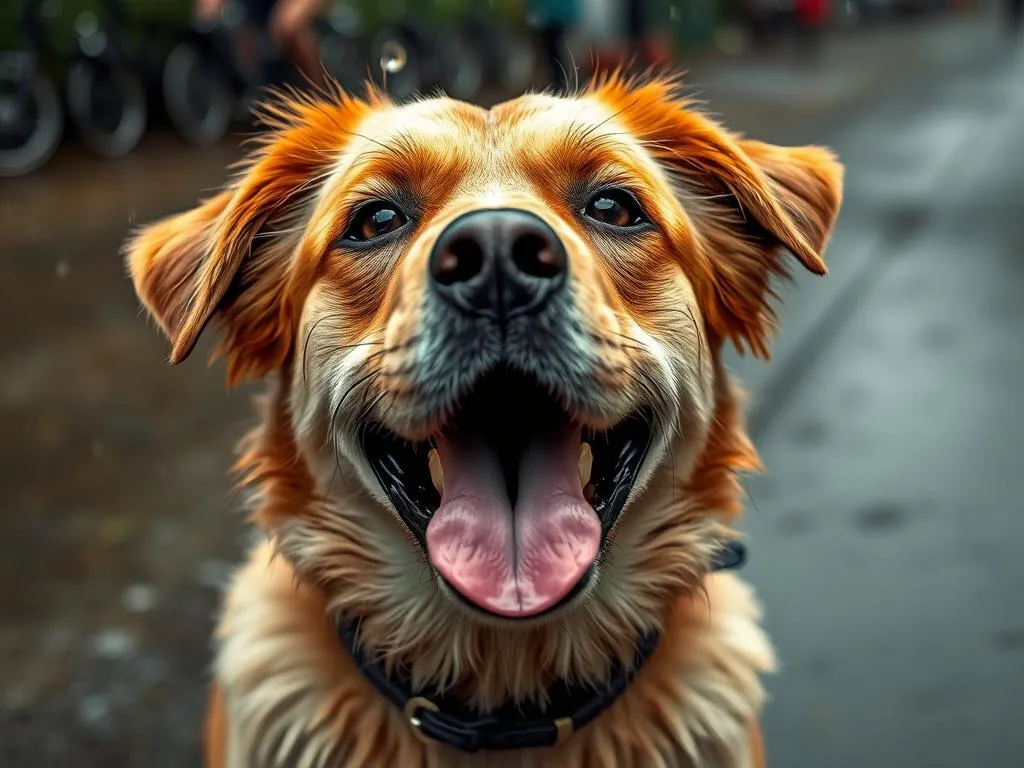
Introduction
The relationship between dogs and weather can be as varied as the breeds themselves. When it rains, some dogs bound joyfully into puddles, while others seem to sulk and resist the outdoors altogether. Do dogs like rain? Why some dogs enjoy it while others don’t is a question that many pet owners ponder, especially when rainy days alter their furry friends’ behavior.
Understanding why some dogs revel in the rain while others shy away is crucial for dog owners. It not only helps in managing their pets during inclement weather but also enhances the overall relationship between dogs and their humans. In this article, we will explore the various factors influencing dogs’ attitudes towards rain, shedding light on their behavior, biology, and individual preferences.
Understanding Canine Behavior
The Basics of Dog Behavior
Dogs exhibit a range of behaviors that can be classified as either innate or learned. Innate behaviors are those that dogs are born with, such as barking, digging, or retrieving. On the other hand, learned behaviors develop through experience and interaction with their environment. Genetics plays a significant role in shaping these personality traits, leading to distinct differences in how individual dogs respond to various stimuli, including weather changes.
Sensory Perception in Dogs
Dogs possess heightened senses compared to humans, particularly their sense of smell, hearing, and even sight. When it rains, the sounds of raindrops hitting the ground and the fresh, earthy scents released can excite some dogs. For others, the loud noises and sudden changes in their environment can be overwhelming. Understanding how rain affects a dog’s sensory perception is key to interpreting their reactions.
Individual Personality Differences
Just like humans, dogs have unique personalities. Some dogs are naturally confident and curious, while others may be timid and anxious. This diversity in temperament greatly influences a dog’s reaction to rain. A confident dog may see rain as an opportunity for adventure, while a timid dog may perceive it as a threat.
Factors Influencing Dogs’ Attitudes Towards Rain
Breed-Specific Traits
Certain dog breeds are more inclined to enjoy rainy weather due to their genetic background and original purpose. For example, Labrador Retrievers, known for their love of water, often thrive in wet conditions and may even enjoy splashing through puddles. Conversely, breeds like Greyhounds, which are typically more sensitive, may be hesitant or fearful when it rains. Understanding these breed-specific traits can help owners anticipate their dog’s behavior during rainy days.
Early Experiences and Socialization
A dog’s early experiences can significantly shape its behavior towards rain. Puppies that are exposed to rain in a positive manner may grow up to be more comfortable with wet conditions. Conversely, dogs that have had negative experiences—like being caught in a storm without shelter—may develop a fear of rain. Socialization plays a critical role in this process; dogs that are gently introduced to various weather conditions often adapt better.
Environmental Factors
The dog’s living environment also contributes to its attitude towards rain. Dogs raised in urban settings may not be as familiar with rain as those living in rural areas, where wet weather is more common. Additionally, climate and weather patterns can affect a dog’s comfort level with rain. A dog that experiences rain frequently may learn to accept it more readily than one who encounters it rarely.
Health and Aging
Health conditions can greatly influence a dog’s willingness to venture outside in the rain. Dogs suffering from arthritis or other joint issues may find it uncomfortable to walk on wet ground. Similarly, older dogs may be more sensitive to cold, damp environments. Owners should take these factors into account when determining whether to encourage their pets to enjoy the outdoors during rainy weather.
Behavioral Signs of Enjoyment or Discomfort
Signs a Dog Likes Rain
When dogs enjoy the rain, their behavior often reflects pure joy. They may exhibit playful actions such as jumping, running in puddles, or even rolling in the wet grass. Signs of excitement include a wagging tail, barking, and a relaxed body posture. These behaviors indicate that the dog is comfortable and having fun in the rain.
Signs a Dog Dislikes Rain
Conversely, dogs that dislike rain may display fearful behaviors. Common signs include hiding, trembling, or trying to escape from the rain. Additionally, some dogs may show reluctance to go outside, sitting at the door or resisting the leash. Understanding these signs is essential for dog owners to ensure their pets feel safe and comfortable.
Understanding Dog Body Language
Reading a dog’s body language is crucial when assessing their comfort level in the rain. A relaxed stance, wagging tail, and playful demeanor indicate enjoyment, while a lowered head, tucked tail, and avoidance behaviors suggest discomfort. Being observant of these cues allows owners to respond appropriately, ensuring their dog’s well-being during wet weather.
How to Manage Dogs During Rainy Weather
Preparing Your Dog for Rain
Acclimating a dog to rainy conditions can help mitigate any fear or anxiety. Training techniques that involve positive reinforcement—such as rewarding your dog for stepping outside in light rain—can create a more positive association with wet weather. Gradually increasing exposure to rain can also help them adapt more comfortably.
Safety Precautions
Ensuring dogs are safe and dry during rain is paramount. Rain gear such as dog raincoats and boots can keep them comfortable and protect against hypothermia. Additionally, having a designated area for bathroom breaks that is sheltered from the rain can make outings more pleasant for both the dog and the owner.
Alternative Indoor Activities
On particularly rainy days, keeping dogs entertained indoors is beneficial for their mental and physical stimulation. Engaging activities can include interactive toys, training games, or even setting up an indoor obstacle course. These alternatives can keep their spirits high and prevent boredom while staying dry.
Conclusion
Understanding do dogs like rain? Why some dogs enjoy it while others don’t involves a complex interplay of genetics, early experiences, environmental factors, and individual personality traits. Recognizing the signs of enjoyment or discomfort in dogs can help owners provide appropriate care during rainy weather. By being attentive to their dog’s needs and preferences, owners can foster a more enjoyable relationship, ensuring that rainy days are not a source of stress but rather an opportunity for fun.
It’s essential to remember that each dog is unique, and their preferences regarding rain will vary. By observing and responding to their behaviors, owners can create a supportive environment that allows their pets to thrive, regardless of the weather.









